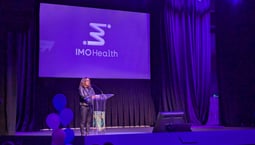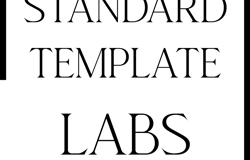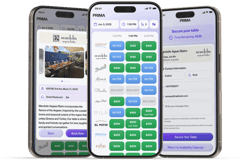WHAT YOU’LL DO:
- Semantic Model Design: Contribute to the design, development, and iterative refinement of complex semantic data models, with a focus on ontologies, knowledge graphs, and property graphs.
- Requirement Translation: Assist senior team members in translating intricate, cross-functional business needs into formal, scalable knowledge graph structures, ensuring tight alignment with the enterprise data strategy.
- Governance and Standards: Document semantic assets, including detailed entity definitions, relationship types, axioms, constraints, and data lineage, ensuring adherence to established best practices and fostering consistency across the organization.
- Graph Data Analysis & Feature Engineering: Utilize data science methodologies and Python scripting to conduct exploratory data analysis (EDA) on graph structure, identify data patterns, perform feature engineering, and support advanced analytics based on the knowledge graph.
- Data-Driven NLP Integration: Apply Natural Language Processing (NLP) techniques and tooling to unstructured clinical text and data streams to identify, extract, and map new entities, attributes, and relationships directly into the semantic models, effectively structuring raw data for machine learning consumption.
- Robust Data Quality: Implement and maintain data quality frameworks, validation rules (e.g., using SHACL), and transformation logic within the semantic layer to ensure the accuracy, reliability, and consistency of the knowledge graph.
- Cross-Functional Partnership: Partner closely with Staff semantic engineers, clinicians, content teams, and business leaders to understand domain knowledge and requirements, and ensure semantic solutions effectively meet organizational objectives.
- Research & Evaluation: Assist in researching, evaluating, and utilizing new technologies, methodologies, and best practices in semantic modeling, knowledge graph technologies, and NLP to drive continuous process improvement.
- Knowledge Sharing: Proactively share technical expertise and knowledge with peers and cross-functional teams.
WHAT YOU’LL NEED:
- BA/BS in a STEM field (e.g., Computer Science, Data Science, Bioinformatics) with 3-5 years of hands-on work experience in data modeling or data engineering.
- Proven hands-on experience in semantic modeling concepts (ontologies, knowledge graphs, property graphs).
- Expertise in Python for data manipulation, analysis, and pipeline development, including libraries like Pandas/NumPy.
- Strong understanding of statistical and machine learning concepts (e.g., classification, clustering, regression) and their application to graph-based data.
- Demonstrated experience with NLP technologies and libraries (e.g., NLTK, spaCy, Gensim, Hugging Face) for text extraction, named entity recognition, or relationship extraction.
- Strong working knowledge of graph database platforms (e.g., Amazon Neptune, Neo4j, etc.) and graph query languages (e.g., SPARQL or Gremlin).
- Familiarity with semantic web standards like OWL, RDFS, and SHACL.
- Experience with relational databases (SQL) and general data warehousing concepts.
- Ability to communicate complex technical concepts effectively to both technical and non-technical stakeholders.
- Experience in an Agile/Scrum environment, iteratively developing and deploying data solutions.
NICE TO HAVE:
- Practical experience with AWS data services (e.g., Glue, Sagemaker) and ETL/ELT methodologies.
- Understanding healthcare ontologies and standards like SNOMED-CT, LOINC, RxNorm, and ICD-10.
Top Skills

What We Do
We are a team of dedicated clinical terminologists, data scientists, industry subject matter experts, and informaticists who helped facilitate the evolution from analogue to digital capture of clinical events, the precise code-mapping that simplifies complex workflows, and the translation of unstructured into structured data. We “wrote the digital dictionary” used in every major EHR, and we are leveraging clinical AI to generate insights that expand and deepen our impact across the healthcare ecosystem.
At the end of the day, we don’t make decisions for our clients. We provide them with the digital tools to enable sound decision-making.
Why Work With Us
We are building a clinical intelligence stack—medical ontology, human expertise, and AI—that makes data more useful and more powerful. By enhancing data’s structure, richness, and precision, we reduce noise and error, streamline complexity, and create clarity across the clinical information chain.
Gallery










